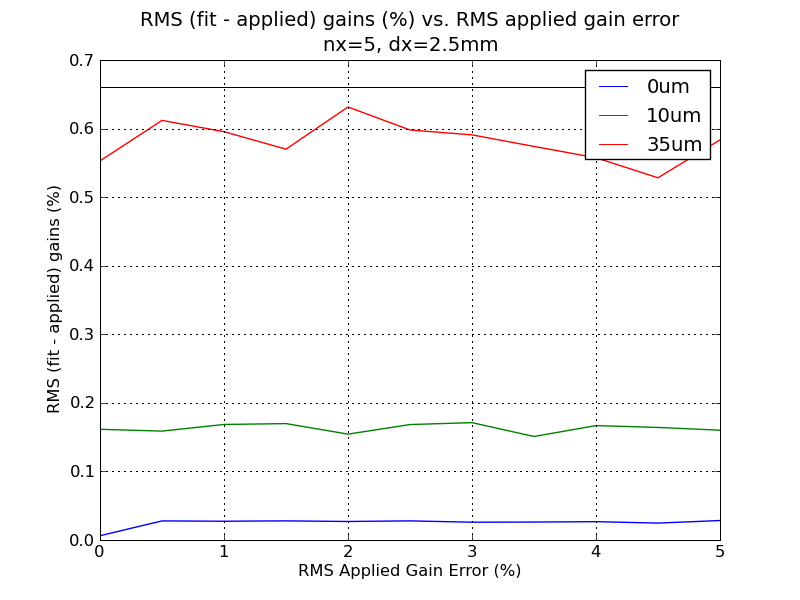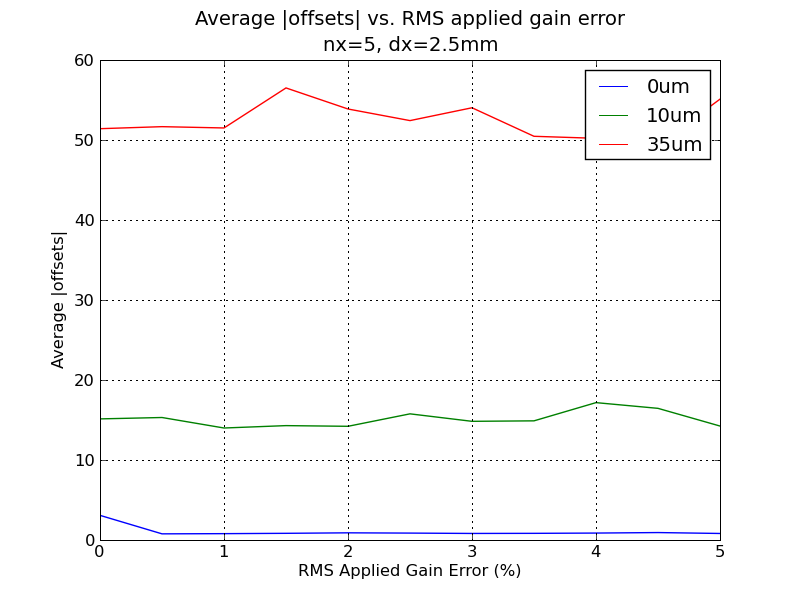

Now that bsim_cesr has been structured as a modular library, how well can we fit gain errors of different amplitudes and at different resolutions?
Simulate: For each combination of resolution and gain errors, generate 100 BPMs of simulated gain map data (5x5 grid, 2.5mm spacing) and fit in bpm_gain_anal. For each BPM, find the RMS difference between applied and fit gains. Average over all BPMs. For offsets, find the |average| difference between applied (zero) and fit offsets.
Looks like the quality of fit is roughly independent of gain error amplitude, at least up to 5%. Now for each resolution, we have an idea of the level of correction we can expect to achieve for gain errors. Use these as inputs to Cbar simulation, and apply resolution with its corresponding gain error. Assume residual gain error is constant, depending on resolution:
| Resolution | Residual Gains (RMS) |
|---|---|
| 0um | 0.03% |
| 10um | 0.17% |
| 35um | 0.6% |